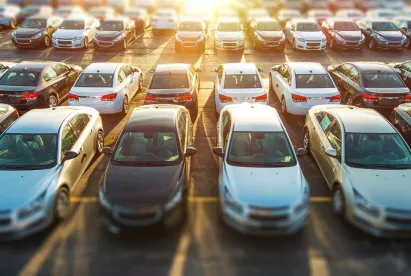15 states and the District of Columbia announced a Memorandum of Understanding (MOU) earlier this week to support sales of electric medium and heavy-duty vehicles, such as delivery trucks, school buses, long-haul trucks, and transit buses. These states – including California, New York, New Jersey, Pennsylvania, Massachusetts, Maryland – have agreed to “work together to foster a self-sustaining market” for zero-emission medium and heavy-duty vehicles by using the Multi-State ZEV Task Force (Task Force), which was established in 2013. The Signatory States to this MOU (i) set a goal that, by 2050, 100% of all new medium- and heavy-duty vehicles sold will be zero-emission vehicles and (ii) also identified an interim goal of 30% of new medium- and heavy-duty vehicles sales be ZEV by 2030. Although this MOU does not create any legal rights or obligations, and Signatory States can withdraw from the MOU at any time, it sends a strong signal about the priorities of these states and the likelihood of multi-state action to create incentives for medium- and heavy-duty ZEV vehicles in the coming years.
Who Signed the MOU?
The signatories to the MOU are California, Connecticut, Colorado, Hawaii, Maine, Maryland, Massachusetts, New Jersey, New York, North Carolina, Oregon, Pennsylvania, Rhode Island, Vermont, and Washington.
What Will the MOU Do?
This MOU sets out the Signatory State’s general commitment to medium- and heavy-duty ZEV vehicles and identifies specific actions the Signatory States will take, either individually or through the Task Force.
-
Task Force: Under this new MOU, the Task Force will develop an action plan “to identify barriers and propose solutions to support widespread electrification of medium and heavy-duty vehicles,” also known as the Zero Emission Medium- and Heavy-Duty Vehicle Action Plan. In developing this plan, the Task Force will consider a number of issues and factors, including Signatory State adoption of the California Advanced Clean Trucks rule under Clean Air Act Section 177.
-
State Actions: The MOU also identifies specific State actions to support the overall 2030 and 2050 goals. First, the States will report on their progress toward these goals, and this data will be used to determine whether the 2030 interim goal needs to be revised. Second, the Signatory States agree to “lead by example” by increasing the electrification of their government and quasigovernmental agency fleets. Third, the States agree to focus on deploying ZEV buses in disadvantaged communities who have historically borne disproportionate air pollution burdens. Fourth, States will seek to coordinate with other state agencies, such as state public utility commissions, environmental agencies, planning agencies, and transportation agencies. Fifth, the States agree to “explore opportunities to cooperate, coordinate and partner, as appropriate,” with several listed stakeholders, including truck manufacturers, fuel providers, charging infrastructure companies, community organizations, corporate fleet owners, and utilities.
What Are the Limits of the MOU?
The MOU specifically emphasizes that it is a voluntary document. The MOU does not create any enforceable legal rights or obligations, does not remove each state’s discretion to implement its commitments “in light of the Signatory State’s individual circumstances, laws, and policies,” and does not create reciprocal obligations (wherein one state would be forced to undertake actions because of the actions of another Signatory State). The MOU states that Signatory States are free to withdraw at any time. The MOU sets out how Signatory States can terminate their participation in the MOU. It also states that other States may join and sign the MOU and that the MOU can be amended “upon the collective agreement” of the Signatory States. Further, although this non-binding, unenforceable MOU demonstrates a commitment to reducing Medium- and Heavy-Duty Vehicle emissions, any change to regulatory emission standards would require rulemaking.





 />i
/>i

